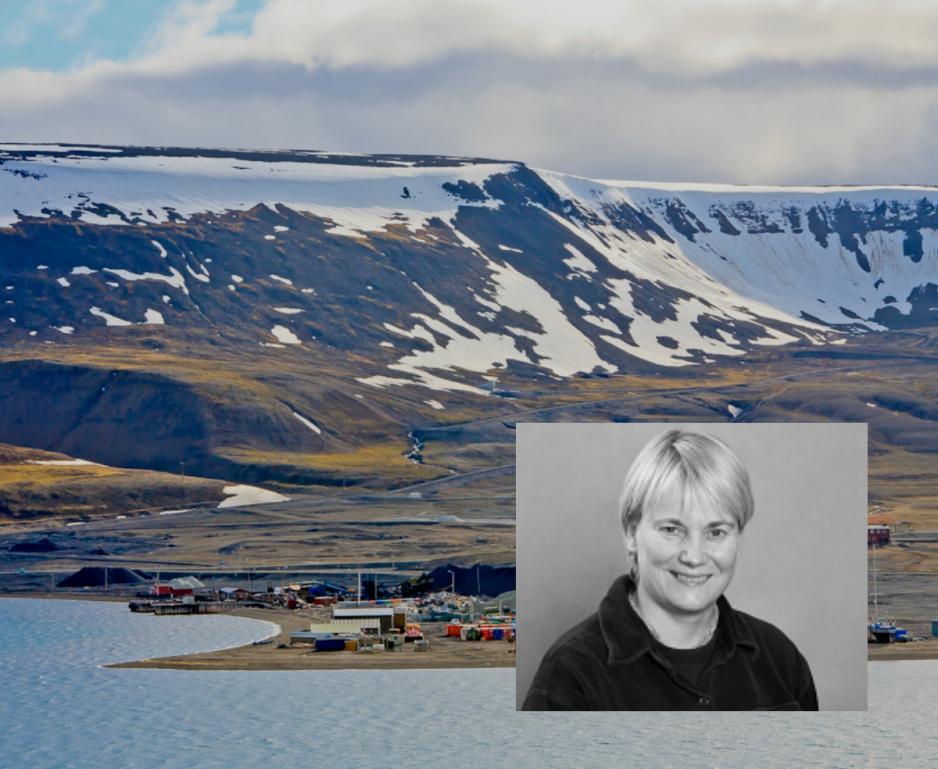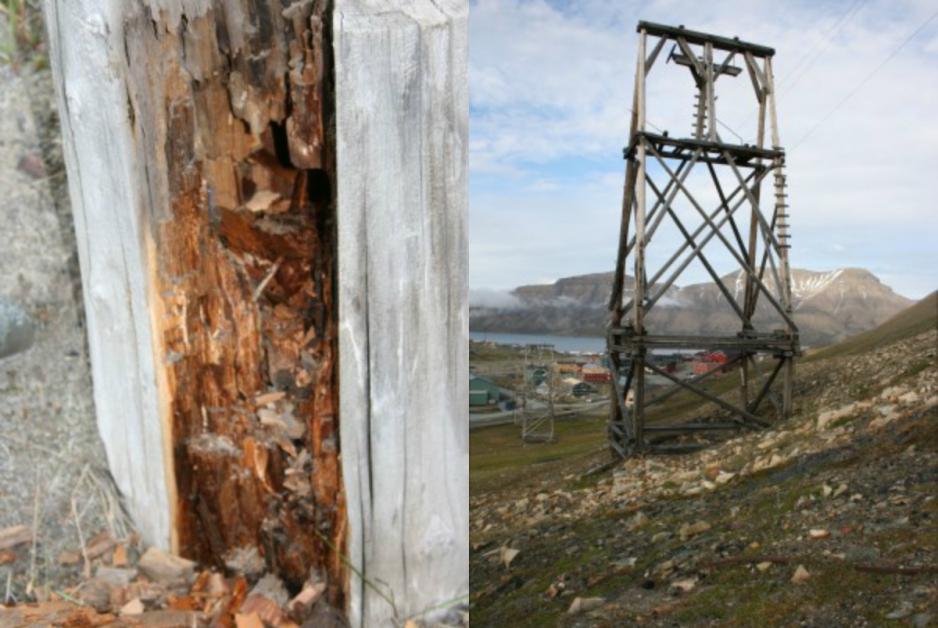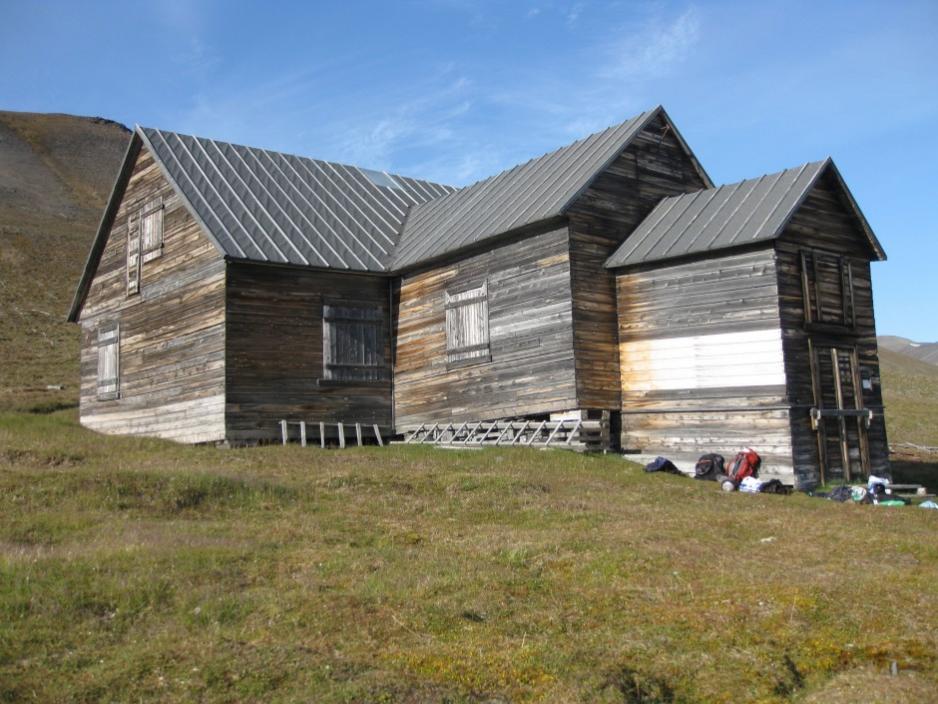Climate Change Threatens Svalbard Houses

Rot turns out to be a serious consequence of thawing permafrost on Svalbard, thus a direct consequence of climate changes in the Arctic.
- Nearly all buildings on Svalbard are built on poles, that is: timber poles that have been hammered into the permafrost ground. Roads, bridges, the airport and other infrastructure are also built on permafrost, says Anne-Cathrine Flyen of NIKU, the Norwegian Institute for Cultural Heritage Research.
She says the problem with rot fungi lies in the transition between the soil and the air in these poles, and that the problem escalates in line with climate changes.
- These changes cause rot fungi to attack the timber poles, which is hard to reveal, as it starts from the inside out in the poles. This is a kind of fungus that has more or less specialized on Svalbard and that appears to thrive under Arctic conditions, the researcher says.
She first became aware of the serious problem when investigating cultural heritage objects such as the Longyearbyen cableway’s work stands and the Swedish House on Svalbard in the early 2000s.
- Following on from that, we checked poles underneath newly built houses. I know there has already been a process of replacing the poles underneath at least two buildings, one of which is owned by the Local Council in Longyearbyen. It is a very demanding and costly process, Flyen says.

Rot fungi
Flyen has conducted research on the effect of the Svalbard Governor’s attempts to solve the problems of the warming ground, an initiative started in the 1990s.
- It started out focusing on cultural heritage, however, research has proven that it will have consequences for most of the infrastructure on the island, more or less, says Flyen.
Attempts at isolating houses from below, near the wooden poles on which most buildings on Svalbard are based, has had consequences.
- The Svalbard Governor tried preventing the ground from thawing, in order to prevent the soil from sliding in slopes behind protected buildings. Soil sliding puts pressure on the underground poles and can lead to the building’s being pushed off their base. The Governor also isolated around the timber poles, not knowing what the consequences were to be for the poles, Flyen says.
It turned out to be most unfortunate. The isolation did keep the frost in the ground and prevented thawing, however, it also made sure that the temperature inside the wood, immediately above the isolation materials, increased.
- That provided even better conditions for the rot fungi, and the decomposition accelerated inside the poles in the area where air meets the ground. Which is exactly where the rot fungi were already thriving.

Significant amounts
Flyen believes rotting wood poles can become a costly business for Svalbard in the future.
- I believe all the timber poles must be replaced, slowly but steadfastly. We know that the cableway work stands last for 70 years on average before they are so decomposed that they run the risk of falling down. That is when they consist of healthy wood. Newer wooden materials have proven to be somewhat poorer, the researcher says.
She believes one can expect the rot damages to develop faster than originally thought when it was first discovered, as a result of the climate becoming warmer and wetter on Svalbard.
- In addition, I expect other kinds of rot fungi to find their way here when the climate becomes milder, Flyen says. In the 2000s, she worked with the Svalbard Governor.
- I was told very clearly that there is not rot in wood on Svalbard. However, I soon recognized the problem, Flyen says.
Les artikkelen på norsk
